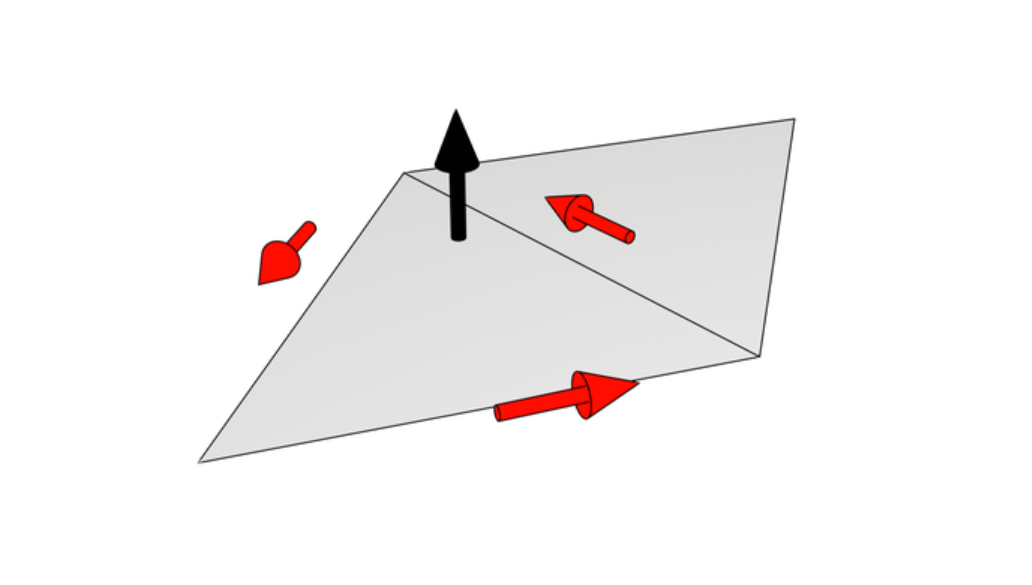本文主要是介绍scikit-learn linaerRegression 1.1.3 LASSO,希望对大家解决编程问题提供一定的参考价值,需要的开发者们随着小编来一起学习吧!
Lasso 是一种估计稀疏线性模型的方法.由于它倾向具有少量参数值的情况,对于给定解决方案是相关情况下,有效的减少了变量数量。 因此,Lasso及其变种是压缩感知(压缩采样)的基础。在约束条件下,它可以回复一组非零精确的权重系数(参考Compressive sensing: tomography reconstruction with L1 prior (Lasso)).
用数学形式表达,Lasso 包含一个使用  先验作为正则化因子的线性模型。其目标函数是最小化:
先验作为正则化因子的线性模型。其目标函数是最小化:
lasso 解决带  罚项的最小平方和,其中
罚项的最小平方和,其中  是一个常量,
是一个常量, 是参数向量的
是参数向量的  -norm
-norm
Lasso 类实现使用了坐标下降法(一种非梯度优化算法) 来拟合系数.参考另一种实现 Least Angle Regression最小角回归
>>> from sklearn import linear_model
>>> clf = linear_model.Lasso(alpha = 0.1)
>>> clf.fit([[0, 0], [1, 1]], [0, 1])
Lasso(alpha=0.1, copy_X=True, fit_intercept=True, max_iter=1000,
normalize=False, positive=False, precompute=False, random_state=None,
selection='cyclic', tol=0.0001, warm_start=False)
>>> clf.predict([[1, 1]])
array([ 0.8])
函数 lasso_path 对于lower-level任务非常有用。它能够通过搜索所有可能的路径上的值来计算系数.
基于加成噪声的手工生成稀疏信号的LASSO和弹性网回归模型估计。估计系数与真实情况进行比较。

Script output:
Lasso(alpha=0.1, copy_X=True, fit_intercept=True, max_iter=1000,normalize=False, positive=False, precompute=False, random_state=None,selection='cyclic', tol=0.0001, warm_start=False)
r^2 on test data : 0.384710
ElasticNet(alpha=0.1, copy_X=True, fit_intercept=True, l1_ratio=0.7,max_iter=1000, normalize=False, positive=False, precompute=False,random_state=None, selection='cyclic', tol=0.0001, warm_start=False)
r^2 on test data : 0.240176
Python source code: plot_lasso_and_elasticnet.py
print(__doc__)import numpy as np
import matplotlib.pyplot as pltfrom sklearn.metrics import r2_score###############################################################################
# generate some sparse data to play with
np.random.seed(42)n_samples, n_features = 50, 200
X = np.random.randn(n_samples, n_features)
coef = 3 * np.random.randn(n_features)
inds = np.arange(n_features)
np.random.shuffle(inds)
coef[inds[10:]] = 0 # sparsify coef
y = np.dot(X, coef)# add noise
y += 0.01 * np.random.normal((n_samples,))# Split data in train set and test set
n_samples = X.shape[0]
X_train, y_train = X[:n_samples / 2], y[:n_samples / 2]
X_test, y_test = X[n_samples / 2:], y[n_samples / 2:]###############################################################################
# Lasso
from sklearn.linear_model import Lassoalpha = 0.1
lasso = Lasso(alpha=alpha)y_pred_lasso = lasso.fit(X_train, y_train).predict(X_test)
r2_score_lasso = r2_score(y_test, y_pred_lasso)
print(lasso)
print("r^2 on test data : %f" % r2_score_lasso)###############################################################################
# ElasticNet
from sklearn.linear_model import ElasticNetenet = ElasticNet(alpha=alpha, l1_ratio=0.7)y_pred_enet = enet.fit(X_train, y_train).predict(X_test)
r2_score_enet = r2_score(y_test, y_pred_enet)
print(enet)
print("r^2 on test data : %f" % r2_score_enet)plt.plot(enet.coef_, label='Elastic net coefficients')
plt.plot(lasso.coef_, label='Lasso coefficients')
plt.plot(coef, '--', label='original coefficients')
plt.legend(loc='best')
plt.title("Lasso R^2: %f, Elastic Net R^2: %f"% (r2_score_lasso, r2_score_enet))
plt.show()
例子2:
这个例子显示了从一组平行投影中重建图像的过程,这些投影是沿着不同的角度获得的。这样的数据集是在计算机断层扫描中获得的。
如果没有关于样本的任何先验信息,重建图像所需的投影数是图像的线性尺寸L的顺序(以像素为单位)。为了简单起见,我们在这里考虑一个稀疏图像,其中只有边界上的像素具有非零值。这样的数据可以对应于蜂窝材料。但是请注意,大多数图像在不同的基础上是稀疏的,如Haar小波。只有L/7预测获得,因此有必要使用样本上的先验信息(其稀疏性):这是压缩感知的一个例子
层析投影操作是一种线性变换。除了与线性回归相对应的数据保真项,我们还惩罚图像的L1范数,以解释其稀疏性。由此产生的优化问题称为套索。我们使用类sklearn.linear_model.lasso,使用坐标下降算法。重要的是,这种实现在稀疏矩阵上比在这里使用的投影算子计算效率更高。
L1惩罚的重建提供一个结果零误差(所有像素都成功标记0或1),即使加入了噪声预测。相比之下,L2惩罚(sklearn。linear_model。脊)产生大量的像素标记错误。重要文物的重建图像上观察到,与L1惩罚。注意,特别是圆形的伪影,将角点中的像素分割出来,这导致了比中央磁盘更少的投影。

print(__doc__)# Author: Emmanuelle Gouillart <emmanuelle.gouillart@nsup.org>
# License: BSD 3 clauseimport numpy as np
from scipy import sparse
from scipy import ndimage
from sklearn.linear_model import Lasso
from sklearn.linear_model import Ridge
import matplotlib.pyplot as pltdef _weights(x, dx=1, orig=0):x = np.ravel(x)floor_x = np.floor((x - orig) / dx)alpha = (x - orig - floor_x * dx) / dxreturn np.hstack((floor_x, floor_x + 1)), np.hstack((1 - alpha, alpha))def _generate_center_coordinates(l_x):X, Y = np.mgrid[:l_x, :l_x].astype(np.float64)center = l_x / 2.X += 0.5 - centerY += 0.5 - centerreturn X, Ydef build_projection_operator(l_x, n_dir):""" Compute the tomography design matrix. Parameters
---------- l_x : int
linear size of image array n_dir : int
number of angles at which projections are acquired. Returns
-------
p : sparse matrix of shape (n_dir l_x, l_x**2)
"""X, Y = _generate_center_coordinates(l_x)angles = np.linspace(0, np.pi, n_dir, endpoint=False)data_inds, weights, camera_inds = [], [], []data_unravel_indices = np.arange(l_x ** 2)data_unravel_indices = np.hstack((data_unravel_indices,data_unravel_indices))for i, angle in enumerate(angles):Xrot = np.cos(angle) * X - np.sin(angle) * Yinds, w = _weights(Xrot, dx=1, orig=X.min())mask = np.logical_and(inds >= 0, inds < l_x)weights += list(w[mask])camera_inds += list(inds[mask] + i * l_x)data_inds += list(data_unravel_indices[mask])proj_operator = sparse.coo_matrix((weights, (camera_inds, data_inds)))return proj_operatordef generate_synthetic_data():""" Synthetic binary data """rs = np.random.RandomState(0)n_pts = 36.x, y = np.ogrid[0:l, 0:l]mask_outer = (x - l / 2) ** 2 + (y - l / 2) ** 2 < (l / 2) ** 2mask = np.zeros((l, l))points = l * rs.rand(2, n_pts)mask[(points[0]).astype(np.int), (points[1]).astype(np.int)] = 1mask = ndimage.gaussian_filter(mask, sigma=l / n_pts)res = np.logical_and(mask > mask.mean(), mask_outer)return res - ndimage.binary_erosion(res)# Generate synthetic images, and projections
l = 128
proj_operator = build_projection_operator(l, l / 7.)
data = generate_synthetic_data()
proj = proj_operator * data.ravel()[:, np.newaxis]
proj += 0.15 * np.random.randn(*proj.shape)# Reconstruction with L2 (Ridge) penalization
rgr_ridge = Ridge(alpha=0.2)
rgr_ridge.fit(proj_operator, proj.ravel())
rec_l2 = rgr_ridge.coef_.reshape(l, l)# Reconstruction with L1 (Lasso) penalization
# the best value of alpha was determined using cross validation
# with LassoCV
rgr_lasso = Lasso(alpha=0.001)
rgr_lasso.fit(proj_operator, proj.ravel())
rec_l1 = rgr_lasso.coef_.reshape(l, l)plt.figure(figsize=(8, 3.3))
plt.subplot(131)
plt.imshow(data, cmap=plt.cm.gray, interpolation='nearest')
plt.axis('off')
plt.title('original image')
plt.subplot(132)
plt.imshow(rec_l2, cmap=plt.cm.gray, interpolation='nearest')
plt.title('L2 penalization')
plt.axis('off')
plt.subplot(133)
plt.imshow(rec_l1, cmap=plt.cm.gray, interpolation='nearest')
plt.title('L1 penalization')
plt.axis('off')plt.subplots_adjust(hspace=0.01, wspace=0.01, top=1, bottom=0, left=0,right=1)plt.show()
1.1.3.1. 设置正则化参数
alpha 参数控制估计的系数的稀疏程度。
1.1.3.1.1. 使用交叉验证
scikit-learn 暴露以下两个类 LassoCV 和 LassoLarsCV 可以设置 Lasso alpha 参数. LassoCV 基于下面解释的算法 Least Angle Regression最小角回归
对于含有很多共线性的高维的数据集,LassoCV 是最合适不过了。然而,LassoLarsCV 在寻找 alpha 参数更相关的值时更具有优势, 并且如果样本相比于观测的数量时,通常比 LassoCV 更快.


1.1.3.1.2. 基于模型选择的信息约束
LassoLarsIC 建议使用Akaike information criterion (AIC) 和 Bayes Information criterion (BIC)。
由于在计算:math:alpha 过程中,当使用k-折交叉验证的时候,正则化路径只计算1次而不是k+1次,所以在计算上代价非常小。
然而,这种约束需要一个合适的对于解的自由度的估计(可参考矩阵的解的自由度),这可以从大量的样本(渐进结果)导出并且 假设模型是正确的。
例如,数据实际上是有该模型产生的,但是当问题是病态条件时这种数据可能会有问题(参考病态矩阵,条件数等概念),
比如 特征维数大于样本数.(小样本问题)
使用Akaike信息准则(AIC),贝叶斯信息准则(BIC)和选择的LASSO估计正则化参数α的最优值的交叉验证
得到的结果是基于lassolarsic AIC、BIC准则。
基于信息标准的模型选择是非常快速的,但它依赖于对自由度的适当估计,它来自于大样本(渐近结果),假设模型是正确的,即数据实际上是由这个模型生成的。当问题被严重限制(比样本更多的特性)时,它们也会中断。
交叉验证,我们用20倍2的算法来计算套索路径:坐标下降,由lassocv类实现的,和拉尔斯(最小角回归)的lassolarscv类实现。这两种算法给出的结果大致相同。它们在执行速度和数值误差来源方面有所不同。
拉尔斯只计算路径中每个扭结的路径解。因此,当只有很少的扭结时,它是非常有效的,如果很少有特征或样本,则是如此。此外,它可以在不设置任何元参数的情况下计算完整路径。与之相反,坐标下降计算预先指定的网格上的路径点(在这里我们使用默认值)。因此,如果网格点的数量小于路径中的扭结数,则效率更高。如果特征数量非常大,并且有足够的样本选择大量,这样的策略可能会很有意思。在数值误差方面,对于重相关变量,拉尔斯会积累更多的误差,而坐标下降算法只对网格上的路径进行采样。
注意alpha的最佳值是如何变化的。这说明了当尝试通过交叉验证选择参数的方法的性能时,嵌套的交叉验证是必要的:这个参数的选择对于看不见的数据可能不是最优的。
parameter may not be optimal for unseen data.
Script output:
Computing regularization path using the coordinate descent lasso...
Computing regularization path using the Lars lasso...
Python source code: plot_lasso_model_selection.py
print(__doc__)# Author: Olivier Grisel, Gael Varoquaux, Alexandre Gramfort
# License: BSD 3 clauseimport timeimport numpy as np
import matplotlib.pyplot as pltfrom sklearn.linear_model import LassoCV, LassoLarsCV, LassoLarsIC
from sklearn import datasetsdiabetes = datasets.load_diabetes()
X = diabetes.data
y = diabetes.targetrng = np.random.RandomState(42)
X = np.c_[X, rng.randn(X.shape[0], 14)] # add some bad features# normalize data as done by Lars to allow for comparison
X /= np.sqrt(np.sum(X ** 2, axis=0))##############################################################################
# LassoLarsIC: least angle regression with BIC/AIC criterionmodel_bic = LassoLarsIC(criterion='bic')
t1 = time.time()
model_bic.fit(X, y)
t_bic = time.time() - t1
alpha_bic_ = model_bic.alpha_model_aic = LassoLarsIC(criterion='aic')
model_aic.fit(X, y)
alpha_aic_ = model_aic.alpha_def plot_ic_criterion(model, name, color):alpha_ = model.alpha_alphas_ = model.alphas_criterion_ = model.criterion_plt.plot(-np.log10(alphas_), criterion_, '--', color=color,linewidth=3, label='%s criterion' % name)plt.axvline(-np.log10(alpha_), color=color, linewidth=3,label='alpha: %s estimate' % name)plt.xlabel('-log(alpha)')plt.ylabel('criterion')plt.figure()
plot_ic_criterion(model_aic, 'AIC', 'b')
plot_ic_criterion(model_bic, 'BIC', 'r')
plt.legend()
plt.title('Information-criterion for model selection (training time %.3fs)'% t_bic)##############################################################################
# LassoCV: coordinate descent# Compute paths
print("Computing regularization path using the coordinate descent lasso...")
t1 = time.time()
model = LassoCV(cv=20).fit(X, y)
t_lasso_cv = time.time() - t1# Display results
m_log_alphas = -np.log10(model.alphas_)plt.figure()
ymin, ymax = 2300, 3800
plt.plot(m_log_alphas, model.mse_path_, ':')
plt.plot(m_log_alphas, model.mse_path_.mean(axis=-1), 'k',label='Average across the folds', linewidth=2)
plt.axvline(-np.log10(model.alpha_), linestyle='--', color='k',label='alpha: CV estimate')plt.legend()plt.xlabel('-log(alpha)')
plt.ylabel('Mean square error')
plt.title('Mean square error on each fold: coordinate descent ''(train time: %.2fs)' % t_lasso_cv)
plt.axis('tight')
plt.ylim(ymin, ymax)##############################################################################
# LassoLarsCV: least angle regression# Compute paths
print("Computing regularization path using the Lars lasso...")
t1 = time.time()
model = LassoLarsCV(cv=20).fit(X, y)
t_lasso_lars_cv = time.time() - t1# Display results
m_log_alphas = -np.log10(model.cv_alphas_)plt.figure()
plt.plot(m_log_alphas, model.cv_mse_path_, ':')
plt.plot(m_log_alphas, model.cv_mse_path_.mean(axis=-1), 'k',label='Average across the folds', linewidth=2)
plt.axvline(-np.log10(model.alpha_), linestyle='--', color='k',label='alpha CV')
plt.legend()plt.xlabel('-log(alpha)')
plt.ylabel('Mean square error')
plt.title('Mean square error on each fold: Lars (train time: %.2fs)'% t_lasso_lars_cv)
plt.axis('tight')
plt.ylim(ymin, ymax)plt.show()
这篇关于scikit-learn linaerRegression 1.1.3 LASSO的文章就介绍到这儿,希望我们推荐的文章对编程师们有所帮助!
 先验作为正则化因子的线性模型。其目标函数是最小化:
先验作为正则化因子的线性模型。其目标函数是最小化:
 罚项的最小平方和,其中
罚项的最小平方和,其中  是一个常量,
是一个常量, 是参数向量的
是参数向量的  -norm
-norm














